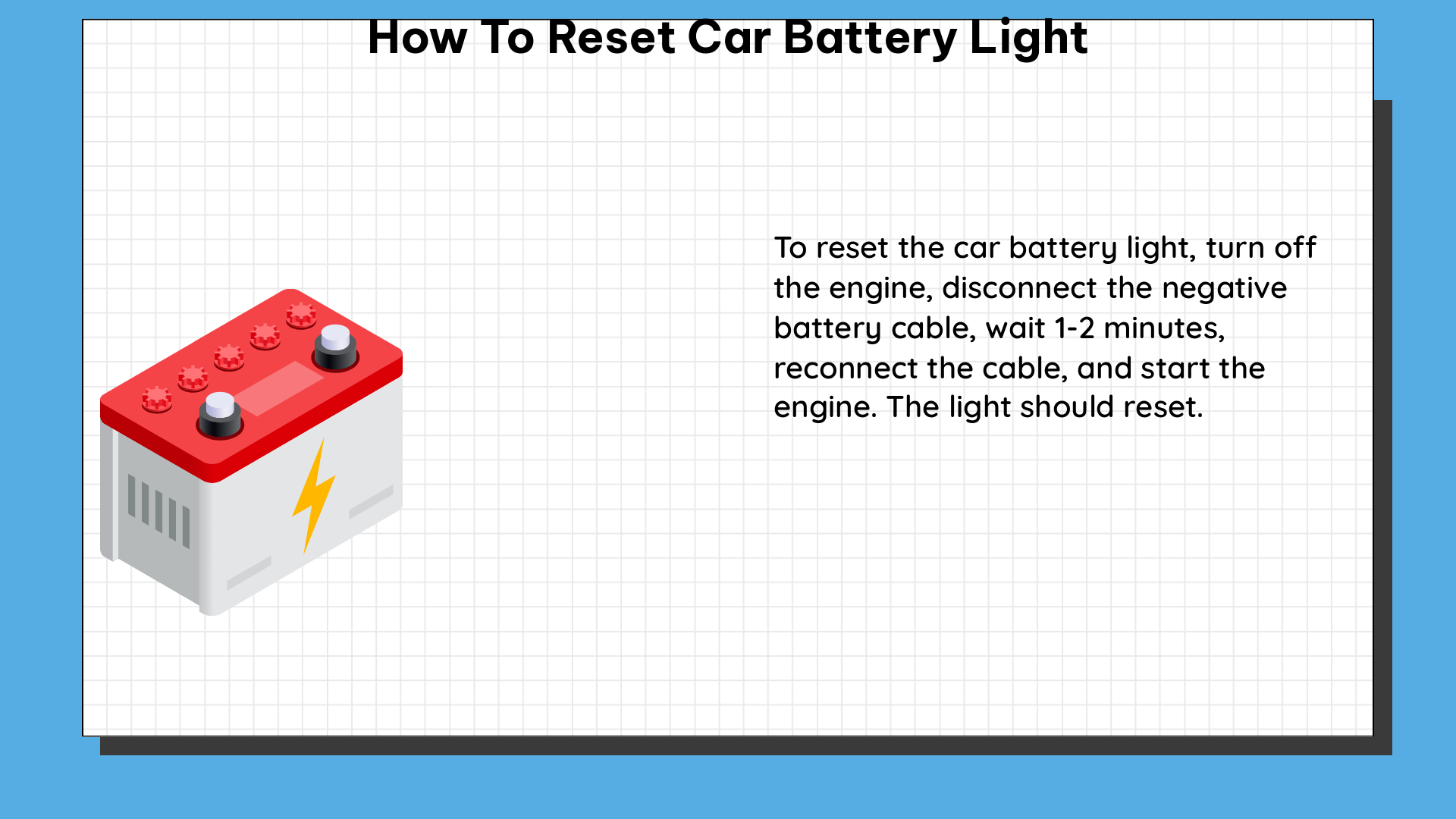The car battery light, also known as the charging system or alternator warning light, is an important indicator that alerts drivers to potential issues with their vehicle’s electrical system. When this light illuminates, it’s crucial to address the problem promptly to avoid further damage to the battery or other electrical components. In this comprehensive guide, we’ll walk you through the step-by-step process of resetting the car battery light, providing you with the technical details and expert insights to ensure a successful resolution.
Checking the Battery
The first step in resetting the car battery light is to thoroughly inspect the battery. Begin by visually examining the battery for any signs of damage, such as cracks, leaks, or corrosion around the terminals. Use a wire brush or baking soda and water solution to clean the battery terminals, ensuring a secure connection.
Next, use a multimeter to measure the battery’s voltage. A healthy car battery should read between 12.6 and 12.8 volts when the engine is off. If the voltage is below 12.6 volts, the battery may need to be recharged or replaced. It’s important to note that a low battery voltage can trigger the battery warning light, so addressing this issue is crucial.
Resetting the Battery Light

If the battery is in good condition and the voltage is within the acceptable range, the next step is to reset the battery light. This process typically involves disconnecting the battery for a few minutes, then reconnecting it. However, it’s essential to consult your vehicle’s owner’s manual or a professional mechanic, as this process can also reset other systems in the car, and the specific steps may vary depending on the make and model.
To reset the battery light, follow these general steps:
- Locate the battery in your vehicle, which is usually in the engine compartment or under the rear seat.
- Disconnect the negative (-) battery cable, using a wrench or pliers. Be careful not to touch the positive (+) terminal, as this can cause a short circuit.
- Wait for at least 3-5 minutes to allow the vehicle’s electrical system to fully discharge.
- Reconnect the negative (-) battery cable, ensuring a secure connection.
- Start the engine and observe the battery light. If the light remains on, proceed to the next step.
Resetting the Battery Monitoring System
In some modern vehicles, the battery light may stay on even after resetting the battery. This is because the vehicle’s battery monitoring system needs to be reset to recognize the new battery or the changes in the electrical system.
To reset the battery monitoring system, you’ll need to use a diagnostic scan tool or a dedicated battery reset tool. These tools can communicate with the vehicle’s computer and clear any stored trouble codes related to the battery or charging system.
If you don’t have access to a scan tool, you can try the following alternative method:
- Disconnect the negative (-) battery cable and wait for at least 8 hours, or overnight, to allow the vehicle’s computer to reset the battery monitoring system.
- Reconnect the negative (-) battery cable and start the engine.
- Observe the battery light. If it remains on, you may need to take the vehicle to a professional mechanic for further diagnosis and repair.
Addressing Underlying Issues
If the battery light remains on after resetting the battery and the battery monitoring system, it’s likely that there is an underlying issue with the electrical system. This could be caused by a faulty alternator, a problem with the wiring, or a malfunctioning component in the charging system.
In such cases, it’s essential to have the vehicle inspected by a professional mechanic. They can use diagnostic tools to identify the root cause of the problem and recommend the appropriate repairs. Attempting to diagnose and repair complex electrical issues without the proper knowledge and equipment can be dangerous and may lead to further damage to the vehicle.
Preventive Maintenance
To prevent the recurrence of the battery light and maintain the health of your vehicle’s electrical system, it’s important to follow a regular preventive maintenance schedule. This includes:
- Regularly inspecting and cleaning the battery terminals
- Checking the alternator’s output voltage and ensuring it’s within the recommended range
- Replacing the battery when it reaches the end of its lifespan (typically every 3-5 years)
- Addressing any issues with the vehicle’s electrical system, such as faulty wiring or malfunctioning components
By following these preventive maintenance practices, you can help extend the life of your vehicle’s battery and electrical system, reducing the likelihood of the battery light illuminating in the future.
Conclusion
Resetting the car battery light is a crucial step in addressing electrical system issues in your vehicle. By following the detailed steps outlined in this guide, you can effectively reset the battery light and identify any underlying problems. Remember to always consult your vehicle’s owner’s manual or a professional mechanic if you’re unsure about any of the steps or encounter more complex issues. With the right knowledge and approach, you can keep your vehicle’s electrical system in top condition and avoid costly repairs down the line.
Reference:
- What to do when your battery warning light turns on – Caura
- How to Reset the Battery Monitor on a Modern Vehicle – YouTube
- Battery Light On In Your Car “Here Is What To Do” – YouTube

The lambdageeks.com Core SME Team is a group of experienced subject matter experts from diverse scientific and technical fields including Physics, Chemistry, Technology,Electronics & Electrical Engineering, Automotive, Mechanical Engineering. Our team collaborates to create high-quality, well-researched articles on a wide range of science and technology topics for the lambdageeks.com website.
All Our Senior SME are having more than 7 Years of experience in the respective fields . They are either Working Industry Professionals or assocaited With different Universities. Refer Our Authors Page to get to know About our Core SMEs.